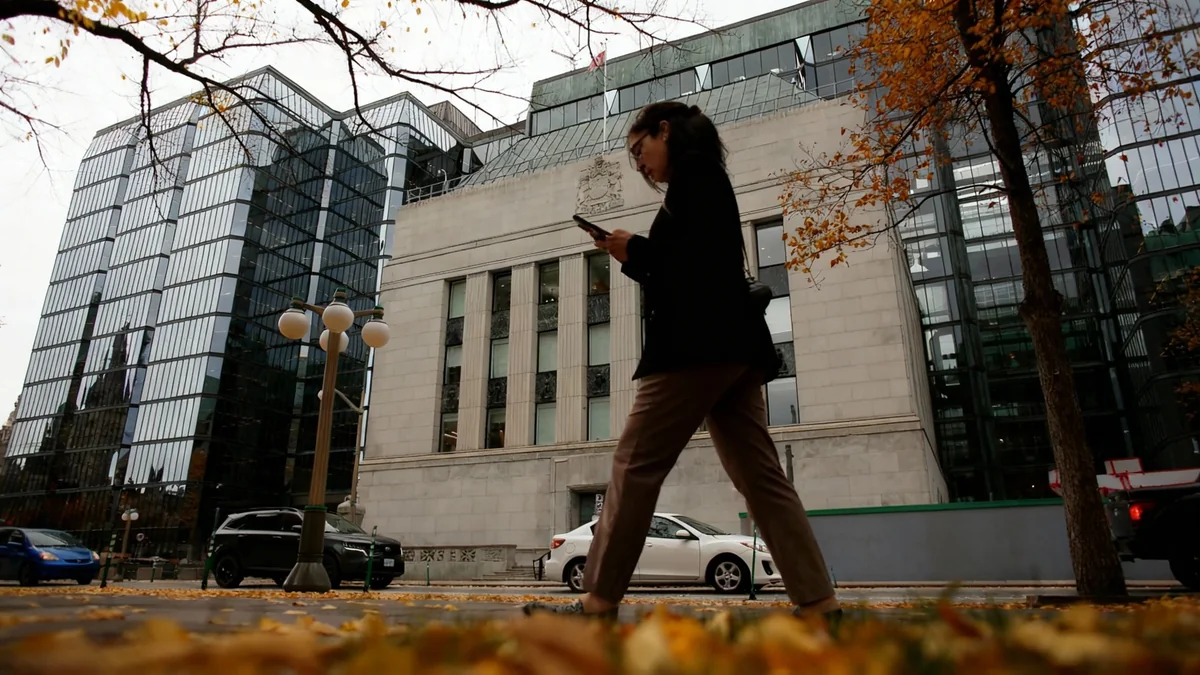The U.S. dollar gained strength against major currencies after the Federal Reserve implemented a 25-basis-point interest rate cut. Market participants had anticipated a more aggressive easing policy, and the central bank's measured approach prompted a reassessment of the dollar's short-term outlook.
This shift in momentum places currency pairs like the Australian dollar versus the U.S. dollar (AUD/USD) and the British pound versus the Australian dollar (GBP/AUD) under scrutiny. Traders are now closely watching upcoming Australian employment data and the United Kingdom's inflation report for the next directional cues.
Key Takeaways
- The U.S. Federal Reserve cut its key interest rate by 25 basis points but signaled a less aggressive easing path than markets had priced in.
- The U.S. dollar reversed its recent downtrend, strengthening as traders adjusted their expectations for future rate cuts.
- Technical indicators for the AUD/USD pair suggest a potential short-term pullback after failing to sustain gains above key resistance levels.
- The GBP/AUD pair is showing signs of a potential countertrend rally as traders await critical inflation data from the UK and jobs numbers from Australia.
- Upcoming economic releases, particularly Australian employment figures and UK CPI, are expected to introduce significant volatility to these currency pairs.
Federal Reserve Action Sparks Dollar Reversal
The U.S. Federal Reserve's decision to lower interest rates by a quarter-percentage point was largely expected. However, the central bank resisted pressure for a larger 50-basis-point reduction and confirmed its projection of two additional cuts before the end of the year.
This outcome was perceived as less "dovish" than many investors had positioned for. A dovish stance typically involves more significant or faster rate cuts, which can weaken a currency. Because the Fed's action was more conservative than anticipated, traders who had bet against the dollar were forced to unwind their positions, leading to a rally in the U.S. currency.
Understanding Market Expectations
In financial markets, the actual outcome of a central bank meeting is often less important than how it compares to what was expected. If a central bank's actions are less aggressive than anticipated (less dovish), the currency tends to strengthen, as was the case with the U.S. dollar following the Fed's announcement.
The dollar's rebound created reversal patterns across several major currency pairs. These technical signals suggest that the recent period of dollar weakness may be entering a corrective phase, potentially leading to choppy, countertrend movements in the near term.
AUD/USD Technical Outlook Shifts Bearish
The Australian dollar's performance against the U.S. dollar provides a clear example of the market's reaction. The AUD/USD pair registered a bearish engulfing day on Wednesday, a technical pattern that often signals a short-term reversal from a peak.
This reversal occurred after the pair failed to hold its position above several critical technical levels, including its November high and both the 200-day simple and exponential moving averages. Closing back below these indicators is a significant sign of weakening momentum for the Australian dollar.
Volatility Metrics
According to market data, overnight implied volatility for the Australian dollar increased by 2.9 percentage points to 6.455. However, one-week implied volatility eased slightly, suggesting the immediate spike in volatility might not be sustained without a new catalyst.
Short-Term Chart Analysis
An examination of the one-hour chart reveals a dramatic spike in trading volume during the Federal Reserve's announcement and the subsequent press conference. A single 65-pip candle during this period accounted for the currency pair's entire daily trading range, highlighting the event's impact.
While a potential double bottom has formed near the 0.6640 level, suggesting the possibility of a minor bounce, the overall technical picture points to downside risk. Sellers may look to enter the market on any short-term rallies. The next significant area of support is located near the 0.6600 level, a high-volume price zone. A break below this area could open the door for a further decline toward the 0.6580 support level.
GBP/AUD Awaits Dual Economic Catalysts
The GBP/AUD currency pair is positioned for a potentially volatile session as traders brace for high-impact data from both Australia and the United Kingdom. The release of Australia's employment report followed by the UK's latest inflation figures will provide fundamental drivers for both currencies.
After a steep decline of more than 3% from its August peak, the GBP/AUD has shown signs of stabilizing. Recent price action includes the formation of small doji candles, which indicate indecision in the market and often precede a change in trend. This has occurred near a key monthly support pivot point.
Momentum indicators are also signaling a potential shift. A bullish divergence has formed on the daily Relative Strength Index (RSI), where the indicator is making higher lows while the price is making lower lows. This often suggests that downward momentum is fading.
Potential for a Countertrend Move
Market sentiment regarding the Bank of England's policy path has shifted, with traders now seeing a lower probability of further rate cuts this year. If upcoming UK inflation data comes in strong, it could reinforce this view and provide a boost to the British pound.
Conversely, a weaker-than-expected Australian jobs report would place downward pressure on the Australian dollar. This combination of events could fuel a countertrend rally in GBP/AUD.
The first level of resistance for the pair is near 2.0531, a zone with significant historical trading volume. If the price can break and hold above this level, the next major target for buyers would be the monthly pivot point around 2.0699.





